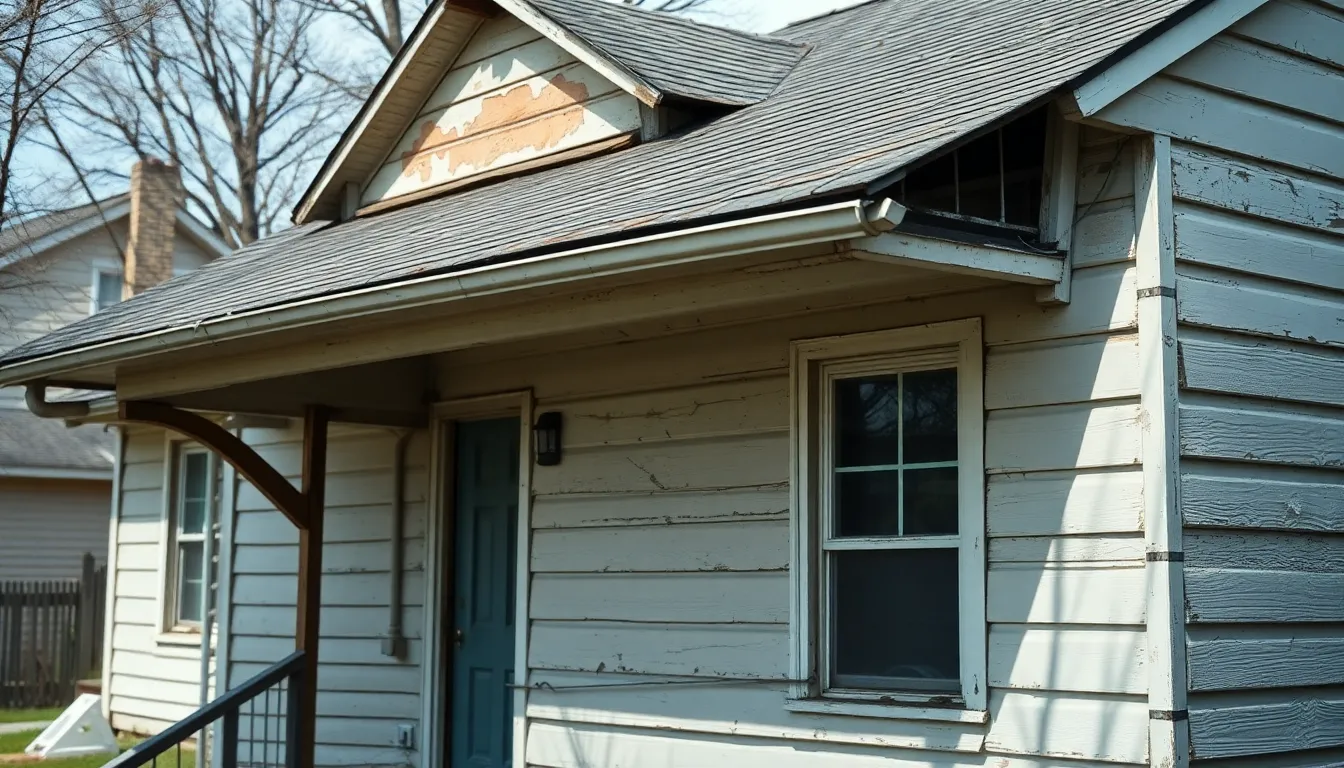Real estate depreciation is a crucial yet often misunderstood concept in the property market. It refers to the decrease in a property’s value over time due to various factors like wear and tear, market fluctuations, and changes in location. Understanding depreciation helps investors make informed decisions and optimize their tax benefits.
For property owners and investors alike, grasping the nuances of depreciation can unlock significant financial advantages. It not only affects investment strategies but also influences cash flow and overall profitability. As the real estate landscape evolves, staying updated on depreciation trends becomes essential for anyone looking to maximize their returns.
Table of Contents
ToggleUnderstanding Real Estate Depreciation
Real estate depreciation refers to the decrease in property value over time, influenced by various factors. Recognizing its implications is crucial for property owners and investors.
What Is Real Estate Depreciation?
Real estate depreciation is a decrease in the property’s market value due to factors like wear and tear, obsolescence, and environmental shifts. The Internal Revenue Service (IRS) allows property owners to deduct this depreciation annually through methods like straight-line depreciation. For residential properties, a common depreciation period is 27.5 years, while commercial properties typically depreciate over 39 years. Real estate depreciation impacts financial statements and tax obligations.
Importance of Valuing Depreciation
Valuing depreciation provides numerous financial advantages. It reduces taxable income, allowing property owners to retain more cash flow. Understanding depreciation also aids in assessing an asset’s true market value, essential for informed investment decisions. Investors can leverage depreciation when calculating return on investment (ROI) and determining property management strategies. Staying updated on local market trends helps owners optimize depreciation benefits relevant to evolving real estate conditions.
Types of Real Estate Depreciation

Real estate depreciation occurs in various forms, each affecting a property’s value differently. Understanding these types helps property owners and investors manage their assets effectively.
Physical Depreciation
Physical depreciation refers to the loss in value due to wear and tear or physical deterioration. This can occur from factors such as natural weathering, poor maintenance, or aging. For instance, a residential property may experience decreased value due to roof damage or outdated plumbing. Generally, physical depreciation is measurable and assessable through property inspections, which reveal repairs or renovations necessary for restoring the property’s market value.
Functional Obsolescence
Functional obsolescence arises when a property’s design or features become outdated, reducing its appeal or utility. Examples include inadequate layouts, lack of modern amenities, or inefficient energy use. For instance, a home lacking a garage in an area where such features are standard may experience diminished desirability. Factors leading to functional obsolescence are often fixable through renovations, yet the costs should be carefully weighed against potential value increases.
Economic Obsolescence
Economic obsolescence occurs when external factors negatively impact property values, often beyond the owner’s control. Examples include changes in the neighborhood, such as increased crime rates, or significant shifts in local markets like new zoning laws or developments that reduce demand. This form of depreciation affects not just individual properties but entire areas, highlighting the importance for investors to remain vigilant about neighborhood dynamics and market trends.
Factors Influencing Real Estate Depreciation
Various factors influence real estate depreciation, affecting property values over time. Understanding these factors enables property owners and investors to make informed decisions related to their investments.
Market Trends
Market trends significantly impact real estate depreciation. Economic cycles, market demand, and interest rates dictate property values. For example, during a recession, demand for homes may decrease, causing prices to drop. Conversely, in a booming market, rising demand can enhance property values. Monitoring local and national market trends helps assess depreciation and adjust investment strategies accordingly.
Property Condition
Property condition directly influences depreciation rates. Maintenance, renovations, and overall appearance affect perceived value. Neglected properties often experience increased physical depreciation, as wear and tear accumulate. Regular inspections can identify needed repairs before they lead to significant value loss. Updating outdated features also counters functional obsolescence, helping maintain the property’s appeal and marketability.
Location Effects
Location effects play a critical role in real estate depreciation. Neighborhood desirability fluctuates with factors like crime rates, schools, and proximity to amenities. Areas undergoing revitalization often see property value increases, while declining neighborhoods experience depreciation. Understanding local trends and demographics allows property owners to anticipate changes and adjust investment approaches. Location significantly influences assessed value and appreciation potential, making it an essential consideration in real estate investment strategies.
Implications of Real Estate Depreciation
Real estate depreciation has significant implications for property owners and investors. It influences financial decisions, investment strategies, and overall profitability.
Tax Deductions
Tax deductions linked to real estate depreciation can reduce taxable income substantially. The Internal Revenue Service (IRS) permits property owners to deduct a portion of a property’s depreciation each year. For residential properties, the typical depreciation period is 27.5 years, while commercial properties use a 39-year period. These deductions help lower tax liabilities and enhance cash flow. Investors can claim these deductions on their annual income tax returns, optimizing their overall tax position. By accurately tracking depreciation, property owners maximize available tax benefits and improve investment returns.
Cash Flow Considerations
Cash flow is directly impacted by real estate depreciation. Depreciation reduces taxable income, which increases retained cash flow for property owners. Higher cash flow allows for reinvestment opportunities, such as property improvements or acquiring additional assets. Additionally, effective management of depreciation helps assess real estate value, guiding decisions on refinancing or selling properties. Investors who understand the interplay between depreciation and cash flow can implement informed strategies that enhance their financial outcomes while ensuring long-term sustainability in their real estate portfolios.
Understanding real estate depreciation is vital for property owners and investors alike. It not only impacts financial strategies but also influences overall profitability. By recognizing the various types of depreciation and the factors that contribute to it, individuals can make informed decisions that enhance their investment outcomes.
Staying updated on market trends and property conditions allows for better asset management. Utilizing tax benefits linked to depreciation can significantly improve cash flow and provide opportunities for reinvestment. Ultimately, a solid grasp of real estate depreciation equips investors with the knowledge needed to navigate the complexities of the market effectively.










